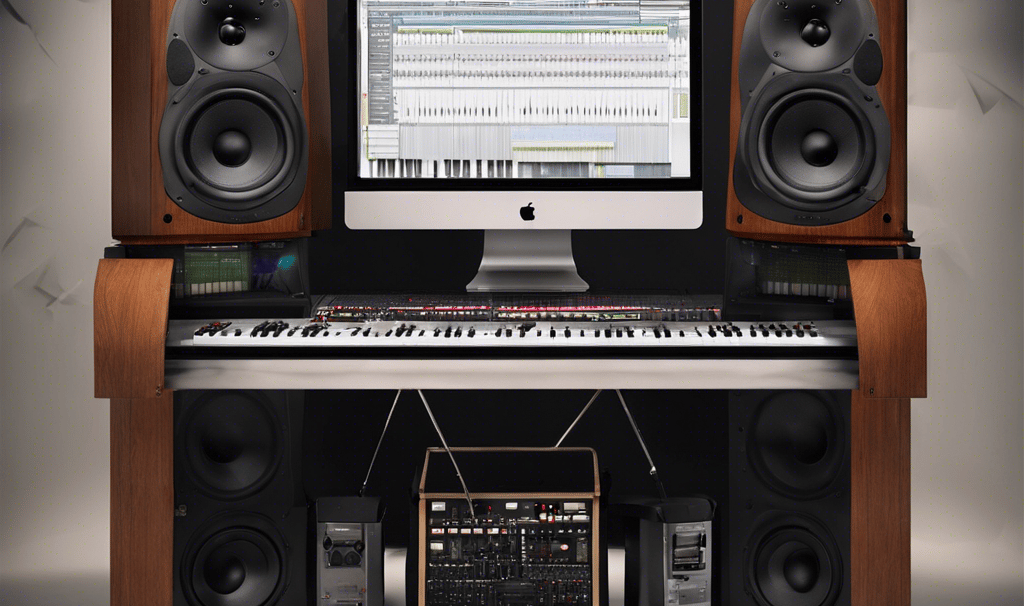Essential Budget Studio Equipment for Your Home Studio in 2025


Introduction to Home Studio Setup
In recent years, the landscape of music production and content creation has undergone significant transformation, making the establishment of a home studio more attainable than ever. As we step into 2025, the proliferation of innovative technology has greatly reduced barriers to entry for aspiring musicians and producers. The ongoing advancements in audio equipment, software, and digital platforms have contributed to an environment where high-quality recordings can be conducted from the comfort of one’s home.
One of the most compelling advantages of setting up a home studio is the potential for affordability. Budget-friendly options for essential studio equipment have become increasingly available, allowing individuals to create professional-sounding recordings without incurring substantial financial commitments. Moreover, this accessibility empowers a wider range of creators to express their artistry, leading to a more diverse musical landscape. Investing in cost-effective tools is a strategic step for anyone looking to embark on a creative journey, providing an avenue to develop skills and sound without the prohibitive expenses associated with traditional recording studios.
Additionally, the significance of cultivating an optimal creative environment cannot be overstated. A well-designed home studio can serve as an inspirational space, enabling artists to fully immerse themselves in their creative process. Personalization and comfort within this environment often lead to enhanced productivity and innovation. The ability to customize one’s studio according to individual preferences facilitates a unique workflow tailored to specific artistic visions, thus ensuring that the creative juices flow freely. Consequently, establishing a home studio is not merely about equipment acquisition; it is about fostering a suitable atmosphere for artistic expression.
Essential Audio Interfaces
In the realm of home studio setups, audio interfaces play a crucial role in bridging the gap between your computer and recording equipment. These devices convert analog signals from microphones and instruments into digital data, allowing for high-quality audio recordings and playback. Selecting the right audio interface is essential for achieving optimal sound quality while ensuring that your home studio remains budget-friendly.
When searching for affordable audio interfaces in 2025, potential buyers should focus on key features such as connectivity, audio quality, and ease of use. Ensuring that the interface has multiple input options, such as XLR and ¼” inputs, will allow for versatility when connecting different instruments and microphones. Additionally, interfaces that offer MIDI inputs are beneficial for integrating keyboards and other MIDI controllers into your setup.
Audio quality is another significant aspect to consider. Look for interfaces that provide at least 24-bit/96 kHz resolution, which is standard for professional recordings. This level of audio fidelity ensures that your recordings capture the nuances of your performance without introducing unwanted noise. Moreover, responsiveness and latency are paramount; an interface that boasts low-latency performance will ensure real-time monitoring without noticeable delays.
For budget-conscious consumers, several models stand out in 2025. The Focusrite Scarlett 2i2 is a highly regarded option, praised for its robust build and excellent preamps. Another noteworthy mention is the PreSonus AudioBox USB 96, which offers great sound quality at an exceptional price point. Lastly, the M-Audio AIR 192|6x6 is also a commendable choice, providing ample connectivity options and competitive audio quality.
Incorporating a reliable audio interface into your home studio can significantly enhance your recording experience. By understanding the essential features and exploring budget options available in 2025, musicians and producers can achieve professional results without excessive expenditure.
Microphones for Home Recording
When setting up a budget-friendly home studio, selecting the right microphone is crucial, as it can significantly influence the quality of your recordings. Two of the most common types of microphones are condenser and dynamic mics, each serving distinct purposes and catering to various recording needs.
Condenser microphones are known for their sensitivity and wide frequency response, making them an excellent choice for capturing vocals and acoustic instruments in detail. These mics generally require phantom power, which means they are often used in conjunction with an audio interface that provides this feature. Popular budget options like the Audio-Technica AT2020 and the MXL 990 deliver impressive sound quality without straining your finances. They are particularly favored in home recording setups for their clarity and warmth, making them suitable for vocals, strings, and pianos.
On the other hand, dynamic mics are generally more durable and capable of handling high sound pressure levels, which makes them ideal for loud sources, such as drums and amplified instruments. They do not require external power and are often less sensitive than their condenser counterparts. Reliable and affordable models such as the Shure SM57 and SM58 are industry standards and recommended for recording instruments and vocals due to their versatility and ruggedness.
When choosing a microphone for your home studio, considering the type of recording you intend to do is essential. For vocal-centric productions, a good condenser mic might be the best investment, while a dynamic mic could serve well for instruments and live performances. Exploring these budget options allows you to achieve high-quality recordings without compromising your overall studio budget.
Monitoring Solutions: Headphones and Speakers
When it comes to music production, having reliable monitoring solutions is paramount. Proper monitoring allows for accurate sound representation, ensuring that the nuances of your mixes translate well across various playback systems. For those setting up a home studio in 2025, budget-friendly options are available that do not compromise on quality. Selecting the right studio monitors and headphones is essential as they significantly affect the mixing and mastering processes.
Studio monitors are designed to provide a flat frequency response, meaning they do not artificially enhance or diminish certain audio frequencies. Understanding this, the Yamaha HS series stands out as a highly recommended option. The Yamaha HS5 and HS8 are particularly favored for their clarity and balance, making them ideal for both amateur and seasoned producers. They are known for their ability to reveal subtleties in mixes, making them excellent choices for a home studio.
In addition to studio monitors, a good pair of headphones is crucial for detailed listening sessions. Closed-back headphones, such as the Audio-Technica ATH-M50x, are often recommended for their isolation and comfort, making them an excellent choice for long mixing sessions. These headphones provide a comparable soundstage to many studio monitors, allowing producers to catch imperfections that may not be noticeable at first glance.
It is also worth considering other options, such as the KRK Rokit series for studio monitors and the Sennheiser HD280 Pro for headphones. Both have garnered positive user reviews and are known for their durability and sound quality. By investing in these monitoring solutions, individuals can ensure that their home studios are equipped to produce high-quality music that meets professional standards.
Digital Audio Workstations (DAWs) for Beginners
Digital Audio Workstations, commonly referred to as DAWs, are pivotal in the contemporary music production environment. These software platforms allow musicians, producers, and audio engineers to record, edit, and produce sound files in a digital format. For beginners embarking on their music production journey, selecting the right DAW is crucial, as it can significantly influence the overall creative process.
In 2025, several affordable DAW options are available that cater to different skill levels and production needs. One of the most popular choices among newcomers is GarageBand, a free application exclusive to Mac users, which provides a user-friendly interface and essential tools for music creation. It features a variety of virtual instruments and loops, making it an excellent starting point. For Windows users seeking a no-cost alternative, Tracktion T7 offers robust features without a price tag, allowing for multi-track recording and extensive editing capabilities.
Another noteworthy DAW is FL Studio, which, while not free, offers a trial version for users to experiment with its capabilities. Renowned for its intuitive rhythm programming, it is favored among electronic music producers. Similarly, Ableton Live Lite provides a limited version that possesses essential functionalities suitable for live performances and studio recording, ensuring flexibility in creative expression.
When evaluating different DAWs, beginners should consider key features including the availability of virtual instruments, the flexibility of audio tracks, MIDI support, and ease of use. Furthermore, it's important to assess whether the DAW supports third-party plugins, as this can greatly expand sonic possibilities. Making an informed choice among these various platforms will significantly enhance the learning experience and contribute to the development of one's musical endeavors.
MIDI Controllers and Production Tools
MIDI controllers have become essential tools in modern home studios, facilitating increased creativity and workflow efficiency for music production. As we approach 2025, the advancements in these devices continue to support artists of all skill levels, including beginners who are just starting to explore their musical potential. By integrating MIDI controllers into your setup, you can leverage the power of digital audio workstations (DAWs) and a variety of production software, significantly enhancing your overall production capabilities.
One of the primary advantages of using MIDI controllers is their ability to replicate the tactile experience of playing traditional instruments. This feature allows users to express themselves more naturally while composing, whether they engage with piano keyboards, drum pads, or even performance pads. Beginner-friendly options like the Akai MPK Mini and the Novation Launchkey Mini are particularly popular due to their compact size and affordability. These controllers feature velocity-sensitive keys and pads, enabling nuanced playing experiences that can enhance the quality of your musical output.
When selecting a MIDI controller, it is crucial to consider key features that align with your production needs. Pad sensitivity is one such aspect; controllers that offer dynamic touch response allow for expressive playing. Additionally, checking for software compatibility ensures that the MIDI controller will integrate smoothly with your preferred DAW, streamlining your workflow. Some models come bundled with music production software, which can further help beginners find their footing in the digital production landscape.
Investing in a MIDI controller can dramatically enhance your musical endeavors, enabling artists to create more engaging compositions while maintaining a user-friendly experience. In summary, the right MIDI controller can offer a wealth of opportunities for creativity and innovation, making it an indispensable element of any home studio setup in 2025.
Accessories: Cables, Stands, and More
Creating a functional home studio setup in 2025 requires attention to detail, especially when it comes to accessories such as cables, stands, and other supplementary items. The effectiveness of your studio environment can significantly influence your music production quality, and it is essential to invest in budget-friendly yet reliable accessories that meet your needs. An array of high-quality cables is crucial for connecting instruments, microphones, monitors, and audio interfaces. Look for durable, low-noise cables that limit interference and provide a clean signal. Companies like Mogami and Hosa offer budget options without compromising quality.
When it comes to stands, both microphone and instrument stands are indispensable in your studio. They not only help in achieving optimal sound capture but also aid in maintaining a tidy workspace. Focus on investing in adjustable stands that can easily fit your recording needs while also being within budget. Brands like On-Stage provide solid, affordable stands that often meet the requirements of budding musicians and producers. Additionally, consider investing in a sturdy desk or a workstation to keep your gear organized and accessible, allowing for a more efficient workflow.
Incorporating additional accessories, such as cable management systems, can help keep your studio free from tangles and clutter. Velcro ties or cable sleeves can enhance the aesthetic while also optimizing your studio's functionality. It's also wise to have microphone pop filters, reflectors, and soundproofing materials, as these elements contribute to better recording outcomes, especially in smaller spaces. However, avoid the common pitfall of overbuying; assess your specific needs to ensure that each accessory serves a purpose and fits within your budget. Thoughtful selection of these accessories will elevate your home studio experience.
